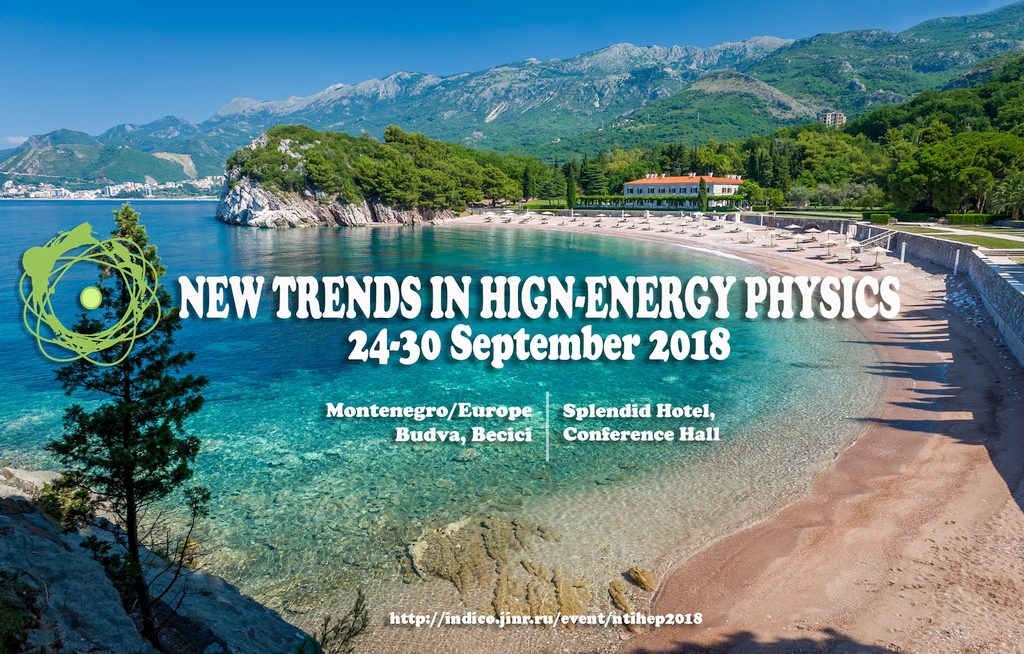Dr
Pavel Zarubin
(Joint Institute for Nuclear Research)
Events of dissociation of relativistic nuclei in nuclear track emulsion (NTE) allow a holistic investigation of “cold” ensembles of lightest nuclei. So far, with regard to fine structure dissociation of relativistic nuclei, the NTE technique remains the only means providing unique completeness of such observations at the best angular resolution and as well as a sufficient statistical provision. Moreover, full-bodied studies of light nuclear structure require reconstruction of relativistic decays of the unstable 8Be and 9B nuclei. Feasibility of such studies in electronic experiments is not visible at all. The cluster structure of light nuclei and the role of the unstable 8Be and 9B nuclei in them is studied in the BECQUEREL project (http://becquerel.jinr.ru/) on the basis of NTE layers longitudinally exposed at the JINR Nuclotron to relativistic Be, B, C and N nuclei, including radioactive isotopes [1]. Recent advances are highlighted [2,3]. On the practical side series of experiments with newly reproduced samples NTE has confirmed prospects of NTE in low and high energy nuclear studies [5].
Recently it is suggested to search in relativistic 12C dissociation for α-particle triples in the second excited state 0+2 of the 12C nucleus (the Hoyle state). The study of the Hoyle-state (HS) in dissociation is setting new limit of NTE use. Being performed in contrast to relativistic energy of 3α-ensembles and minimum possible energy stored by them such observations would clearly demonstrated HS as a full-fledged and sufficiently long-lived nuclear-molecular object. Probably, not only single but also pair- and even triple-wise combinations of α-particles that are close to 8Be might be observed to reflecting the HS structure in less distorted way. It can be expected that 8Be and HS will become reference points to search for more complex states of dilute nuclear matter in dissociation of heavier relativistic nuclei. The current experiment task is to search for several hundreds of 3α-events in NTE pellicles and measure the angles of α-particles in the relevant ranges with a resolution allowing reconstructing decays of the unstable 8Be nucleus and HS. HS events are observed in dissociation 12C → 3α at 4.5 A GeV/c and 1 A GeV/c 12C nuclei with a contribution preliminary estimated to be of the order of 10%. Thus, the first data on relativistic HS are encouraging.
References
1. P. I. Zarubin “”Tomography” of the cluster structure of light nuclei via relativistic dissociation” Lect. Notes in Phys. 875, Clusters in Nuclei, Vol. 3, 51(2013); Springer Int. Publ;
DOI: 10.1007/978-3-319-01077-9_3; arXiv:1309.4881.
2. D. A. Artemenkov et al. “Recent findings in relativistic dissociation of 10B and 12C nuclei” Few Body Syst. (2017) 58: 89. doi:10.1007/s00601-017-1240-3
3. D. A. Artemenkov, A. A. Zaitsev, P. I. Zarubin, “Unstable nuclei in dissociation of light stable and radioactive nuclei in nuclear track emulsion” Phys. Part. Nucl. 48, 147(2017); DOI:10.1134/S1063779617010026; arXiv:1607.08020. .
4. D. A. Artemenkov et al. ”Study of the involvement of 8Be and 9B Nuclei in the dissociation of relativistic 10C, 10B, and 12C nuclei” Phys. Atom. Nucl. 80, 1525(2017); DOI:10.1134/S1063778817060047.
5. P. I. Zarubin “Recent application of nuclear track emulsion technique” Phys. Atom. Nucl. 80, 1126(2017); DOI: 10.1134/S1063778816130093.
Summary
The status of nuclear structure studies by means dissociation of relativistic light nuclei in nuclear track emulsion is overviewed. In dissociation 12C → 3α at 4.5 and 1 A GeV/c in nuclear track emulsion production of the Hoyle’s-state is identified in approximately invariant representation. HS is observed in both cases with a contribution of about 10-15%. This conclusion is grounded on the basis of the most precise angular measurements performed by three research groups in two exposures at two momentum values that are separated in time by two decades. This fact demonstrates the thoroughness of the NTE technique. The first data on the search for HS are encouraging. However, the approach does not allow one to investigate the features of the HS decay. Nevertheless reconstruction of HS on the invariant mass of relativistic α-triples can be applied to study processes with the HS formation as a wholesome relativistic object at large moment transfers.

